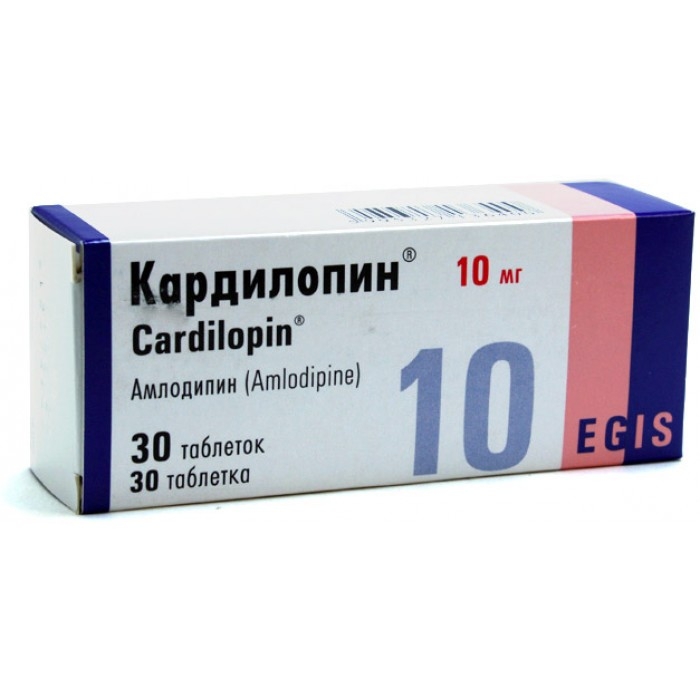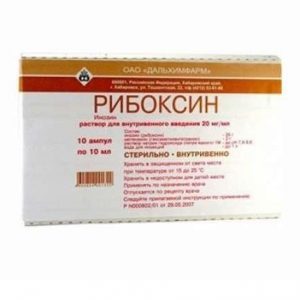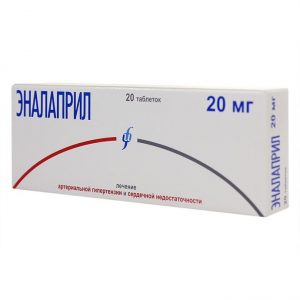Description
Release form
Intra-articular solution of high molecular weight hyaluronic acid – viscous-elastic hydrogel based on hyaluronic acid hydrogel
Packing
30 pcs.
Pharmacological action
Cardilopin is an antihypertensive drug with antianginal effect. Its active substance, amlodipine, It is a slow calcium channel blocker (calcium antagonist), inhibits the incoming transmembrane current of calcium ions into the smooth muscle cells of blood vessels and the heart. The direct relaxing effect of amlodipine on vascular smooth muscle cells helps reduce peripheral vascular resistance and provides the drug with a hypotensive effect. The antianginal effect of Cardilopin is a consequence of the expansion of peripheral arterioles and a decrease in OPSS (total peripheral vascular resistance), resulting in a decrease in energy and oxygen consumption by the myocardium, and a decrease in heart load. The expansion of large coronary arteries and arterioles increases the flow of oxygen to the normal and ischemic zones of the myocardium. Amlodipine does not cause reflex tachycardia, myocardial oxygen supply improves, including with spasm of the coronary arteries (unstable angina, Prinzmetal angina). Taking amlodipine once a day with arterial hypertension provides a decrease in blood pressure (BP) in the supine and standing position, which maintains clinical stability for 24 hours. Due to the gradual slow expansion of blood vessels, the development of acute arterial hypotension while taking Cardilopin is unlikely. In patients with angina pectoris, taking the drug 1 time per day increases the total time it takes to perform a possible physical activity before developing an attack of angina pectoris and the time until the ST interval is significantly reduced. In addition, the frequency of angina attacks and the need for nitroglycerin are reduced. Amlodipine does not have a negative effect on metabolism, does not affect the plasma lipid level, serum uric acid level and blood glucose concentration. The results of the study showed that taking amlodipine in heart failure stage II III according to NYHA classification (New York Cardiology Association) does not cause worsening of clinical symptoms, does not reduce exercise tolerance and left ventricular ejection fraction in patients. In NYHA classification stage III IV heart failure, there was no increase in the frequency of cardiovascular disorders or mortality when combined with diuretics, ACE inhibitors (angiotensin converting enzyme) or digoxin. The use of cardilopin in patients with bronchial asthma has been shown.
Indications
– Arterial hypertension (as monotherapy or, if necessary, as part of combination therapy with other antihypertensive drugs).
– Stable angina pectoris (as monotherapy or as part of combination therapy with other antianginal drugs).
– Angiospastic angina pectoris (Prinzmetal angina) (as monotherapy or as part of combination therapy with other antianginal drugs).
Contraindications
Unstable angina pectoris.
– Clinically significant aortic stenosis.
– Severe arterial hypotension.
– Children and adolescents under 18 years of age (due to lack of clinical experience).
– Pregnancy.
– Lactation (breastfeeding).
– Hypersensitivity to amlodipine and other components of the drug.
Caution is advised to prescribe the drug with:
– Impaired liver function.
– SSSU (severe bradycardia, tachycardia).
– Chronic heart failure in the decompensation stage.
– Mild or moderate arterial hypotension.
– Aortic stenosis.
– Mitral stenosis.
– Hypertrophic obstructive cardiomyopathy.
– Acute myocardial infarction (and within 1 month after).
– Diabetes.
– Elderly patients.
Pregnancy and lactation
Given the insufficient clinical experience with amlodipine during pregnancy and lactation, the drug should not be prescribed to pregnant women or women of reproductive age who do not use effective methods of contraception, unless the therapeutic benefit of the drug justifies possible risk.
If you need to use the drug during lactation, you should stop breastfeeding.
Specific guidance
Studies in patients with stage II and III heart failure according to the NYHA classification when taking amlodipine did not reveal a decrease in exercise tolerance, left ventricular expulsion function, or worsening clinical symptoms. Clinical trials involving patients with heart failure stage III-IV according to NYHA classification showed that amlodipine does not increase the frequency of cardiovascular disorders or mortality when used together with ACE inhibitors, diuretics or digoxin.
During the treatment period, it is necessary to maintain dental hygiene and a visit to the dentist (to prevent soreness, bleeding and gingival hyperplasia).
The dosage regimen for the elderly is the same as for patients of other age groups. With increasing doses, careful monitoring of elderly patients is necessary. The vasodilating effect of amlodipine develops gradually. Therefore, acute arterial hypotension after its use is very rare, however, a gradual dose reduction is recommended before discontinuation of treatment.
Amlodipine does not affect plasma concentrations of potassium, glucose, triglycerides, total cholesterol, LDL, uric acid, creatinine and uric acid nitrogen.
Composition
1 tab. contains:
Active ingredients: amlodipine 5 mg
Excipients: MCC sodium starch magnesium glycolate stearate anhydrous silicon dioxide colloidal.
Dosage and Administration
For the treatment of arterial hypertension or angina pectoris, the usual initial dose is 5 mg 1 time / day (preferably at the same time). Given the reaction of the patient, the initial dose can be increased to 10 mg 1 time / day.
The dose of cardilopin is not changed if it is used simultaneously with thiazide diuretics, beta-blockers or ACE inhibitors.
Side effects
Frequent side effects (> 1%), dose-dependent (in%): peripheral edema (frequency of occurrence for a dose of 5 mg – 3.0% and for 10 mg – 10.8%) dizziness (frequency of occurrence for a dose of 5 mg and 10 mg – 3.4%) flushes (for 5 mg – 1.4% and for 10 mg – 2.6%) palpitations (for 5 mg – 1.4% and for 10 mg – 4, 5%).
Frequent side effects (> 1%), dose-independent (in%): headache (7.3%) abdominal pain (1.6%) increased fatigue (4.5%) drowsiness (1.4%) ) nausea (2.9%).
Other rare side effects: skin rash, gum hyperplasia, dyspepsia, asthenia, arthralgia, myalgia, muscle cramps, sexual dysfunctions (in both men and women), dyspnea, pruritus, pollakiuria.
Very rare side effects: impaired liver function, jaundice, erythema multiforme, gynecomastia.
Other side effects: as with other CCL in patients with severe occlusal form of coronary disease, progression of symptoms of angina pectoris, myocardial infarction, arrhythmias (atrial fibrillation and ventricular tachycardia – which, however, cannot be differentiated from the underlying disease) can occur.
Drug interaction
The simultaneous use of amlodipine with thiazide diuretics, beta-blockers, long-acting nitrates, sublingual nitroglycerin, NSAIDs, antibiotics and oral hypoglycemic agents is possible.
Thiazide and loop diuretics, beta-blockers, verapamil, ACE inhibitors and nitrates enhance the antianginal and hypotensive effects of amlodipine.
Amiodarone, quinidine, alpha 1-blockers, antipsychotic drugs (antipsychotics) and slow calcium channel blockers can enhance the hypotensive effect of ammlodipine.
Calcium preparations can reduce the effect of slow calcium channel blockers (including amlodipine).
Inhibitors of microsomal oxidation, increasing the concentration of amlodipine in blood plasma, increase the risk of side effects, and inducers of microsomal enzymes of the liver reduce.
The antihypertensive effect of amlodipine is weakened by NSAIDs, especially indomethacin (due to sodium retention and blockade of prostaglandin synthesis by the kidneys), alpha-adrenergic agonists, estrogens (due to sodium retention), sympathomimetics.
procainamide, quinidine, and other drugs that cause a prolongation of the QT interval, enhance the negative inotropic effect of amlodipine and may increase the risk of a significant lengthening of the QT interval.
Cimetidine does not affect the pharmacokinetics of amlodipine.
Amlodipine has no effect on the pharmacokinetic parameters of digoxin and warfarin.
Grapefruit juice may slightly increase serum amlodipine, but this does not lead to significant changes in blood pressure.
Overdose
Symptoms: severe BP, tachycardia, excessive peripheral vasodilation.
Treatment: the patient should be given a horizontal position with legs raised. Carry out gastric lavage, the appointment of activated charcoal, the maintenance of cardiovascular function, control of cardiac and pulmonary function, control of BCC and diuresis. Intensive symptomatic therapy is carried out. To restore the tone of the vessels, the use of vasoconstrictor drugs (in the absence of contraindications to their use) to eliminate the effects of calcium channel blockade – in / into the introduction of calcium gluconate. Hemodialysis is not effective.
Storage Conditions
In a dark place at 15-25 ° C.
active substance Amlodipine
The dosage form of
tablet




